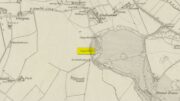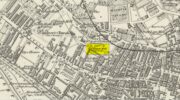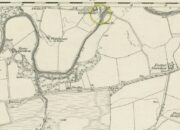Healing Well (destroyed?): OS Grid Reference – SD 8047 5700
Archaeology & History
In Thomas Short’s (1765) description of the once-renowned Wigglesworth Sulphur Well, he mentioned briefly that there were “some (other) chalybeates near it.” Thankfully 85 years later, with the aid of William Howson (1850) who gave us a marginally better description, we were able to locate the whereabouts of one of them! From the Sulphur Well, this one could be found,
“two hundred yards above, on the other side of the rivulet there is a chalybeate spring, but (it was) of no unusual strength.”
In fact it’s a little closer to being 300 yards than 200—but that’s a minor issue in the grand scheme of things! The place in question was marked on the 1852 OS-map, marked simply as a “Well.” …This iron-bearing spring would have been a good pick-me-up and, as with all such wells of this nature, fortifies the blood and the immune system. Mr Howson also told us that “ferrugineous springs, stronger than this, are of frequent occurrence in the neighbourhood,” echoing Short’s earlier remark. Sadly, it seems that all trace of this Well has disappeared.
References:
- Howson, William, An Illustrated Guide to the Curiosities of Craven, Whittaker: London 1850.
- Short, Thomas, A General Treatise on Various Cold Mineral Waters in England, privately printed: London 1765.
© Paul Bennett, The Northern Antiquarian





